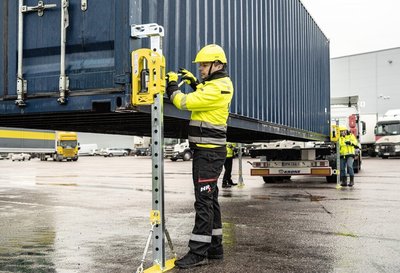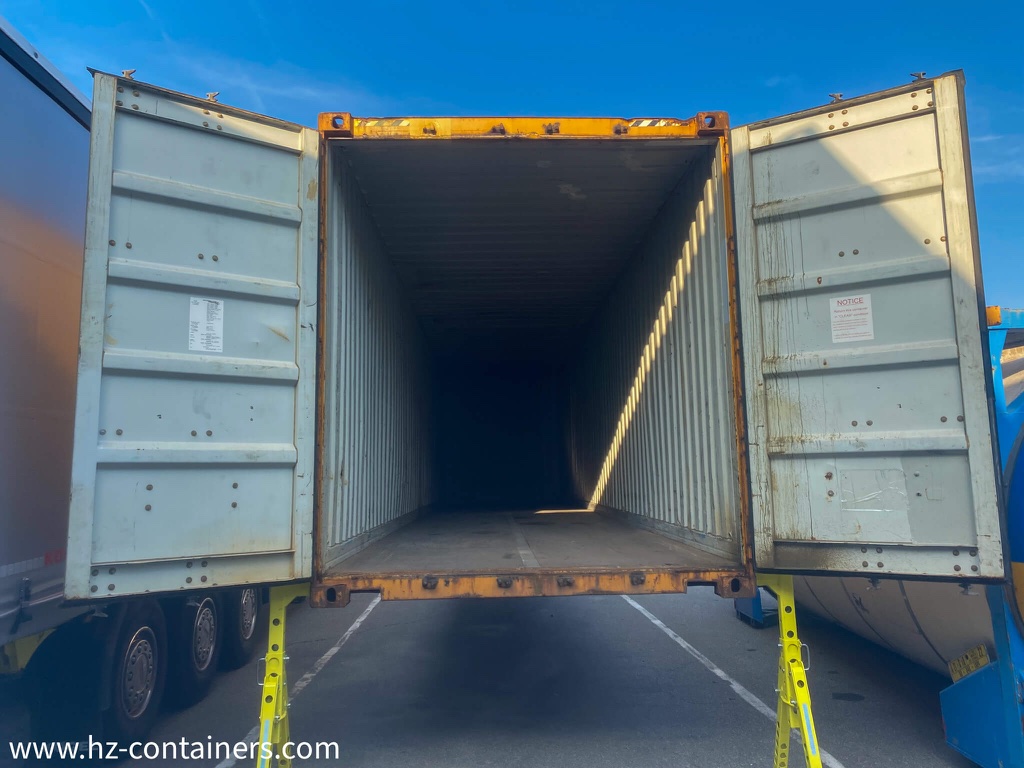When working with shipping containers, achieving the right height is crucial for various applications, from creating accessible ground-level offices to simplifying loading and unloading processes. ConFoot container legs offer a versatile solution for adjusting container height, but understanding the specific height ranges of different models is essential. This article delves into the minimum and maximum height adjustments offered by ConFoot legs, focusing on the popular CFL and CFU models, and explores how these adjustments can benefit your container projects.
Why Height Adjustment Matters for Shipping Containers
Shipping containers are designed for efficient transportation, but their standard height isn’t always ideal for on-site use. Here’s why height adjustment is important:
- Accessibility: Lowering a container to ground level eliminates the need for ramps or stairs, making it easier for people to enter and exit, especially those with mobility challenges.
- Loading and Unloading: Adjusting the container height to match loading dock levels or truck beds simplifies the transfer of goods, reducing the risk of injury and damage.
- Stability on Uneven Ground: ConFoot legs can compensate for uneven terrain, ensuring a level and stable platform for your container.
- Creating Elevated Structures: Raising containers allows for the creation of elevated platforms, storage space underneath, or even multi-story structures.
- Water Drainage: Elevating containers slightly can prevent water from pooling around the base, reducing the risk of corrosion and water damage.
ConFoot CFL: Height Adjustment for Framed Containers
The ConFoot CFL model is specifically designed for framed containers, offering a reliable and robust solution for height adjustment.
- Adjustment Range: The CFL model provides an adjustment range from 1043 mm to 1448 mm.
- Capacity: Each leg can support up to 30 tons, ensuring stability even with heavy loads.
- Weight: Each leg weighs 24 kg, making them relatively easy to handle and install.
This height range is suitable for applications where a moderate lift is required, such as creating a comfortable working height for personnel or aligning the container floor with existing structures.
ConFoot CFU: Versatile Height Control
The ConFoot CFU model offers a wider range of height adjustment, providing greater flexibility for diverse applications.
- Adjustment Range: The CFU model boasts an impressive adjustment range of 0 mm to 1500 mm.
- Capacity: Each leg can support up to 20 tons.
- Weight: A complete CFU leg weighs 46 kg, with individual parts weighing under 25 kg for easier handling.
The CFU’s ability to lower containers to ground level (0 mm) makes it ideal for creating accessible entrances and exits. The maximum height of 1500 mm allows for significant elevation, enabling the creation of elevated platforms or storage space underneath the container.
Choosing the Right ConFoot Model for Your Needs
Selecting the appropriate ConFoot model depends on your specific requirements and the intended use of the container. Consider the following factors:
- Desired Height Range: Determine the minimum and maximum heights you need to achieve for your application. If you require ground-level access, the CFU model is the clear choice. If a moderate lift is sufficient, the CFL model may be more suitable.
- Load Capacity: Ensure that the chosen model can handle the weight of your container and its contents. Both the CFL and CFU models offer substantial load capacities, but it’s crucial to verify that they meet your specific needs.
- Container Type: The CFL model is designed for framed containers, while the CFU model is more versatile and can be used with various container types.
- Ease of Installation: Consider the weight and assembly requirements of each model. The CFU model’s modular design, with individual parts weighing under 25 kg, can simplify installation.
Safety Considerations
When using ConFoot container legs, it’s essential to prioritize safety. Always follow the manufacturer’s instructions and guidelines. Here are some key safety considerations:
- Proper Installation: Ensure that the legs are securely attached to the container and that all locking mechanisms are engaged.
- Weight Distribution: Distribute the load evenly within the container to prevent instability.
- Ground Conditions: Place the legs on a firm and level surface. If the ground is uneven, use shims or other leveling devices to ensure stability.
- Regular Inspection: Inspect the legs regularly for signs of wear or damage. Replace any damaged components immediately.
- Additional Support: When raising containers to significant heights, consider using additional support structures, such as bracing or outriggers, to enhance stability. The ConFoot CFU manual recommends using side supports when the container is 430-550mm or higher from the ground.
Benefits of Using ConFoot Container Legs
ConFoot container legs offer numerous advantages over traditional container handling methods:
- Increased Efficiency: Streamline loading and unloading processes, reducing turnaround times and labor costs.
- Improved Safety: Minimize the risk of injury associated with lifting and moving heavy containers.
- Enhanced Accessibility: Create accessible entrances and exits for people of all abilities.
- Greater Flexibility: Adapt containers to various site conditions and applications.
- Cost Savings: Reduce the need for expensive equipment, such as cranes or forklifts.
- Portability: ConFoot legs are designed to be portable, allowing you to easily relocate containers as needed.
ConFoot Legs and Semi-Trailers
While ConFoot legs are primarily designed for static container placement, they can also be relevant to semi-trailer operations in specific scenarios. For example:
- Temporary Grounding of Container Chassis: In situations where a semi-trailer needs to temporarily drop a container chassis at a location without proper lifting equipment, ConFoot legs can provide a stable and secure support system. This allows the trailer to detach and perform other tasks while the container remains safely grounded.
- Facilitating Loading/Unloading on Uneven Terrain: If a semi-trailer needs to load or unload a container on uneven ground, ConFoot legs can be used to level the container and create a stable platform for the transfer of goods.
- Creating Makeshift Loading Docks: In areas where dedicated loading docks are unavailable, ConFoot legs can be used to raise a container to a suitable height for loading and unloading from a semi-trailer.
However, it’s important to note that ConFoot legs are not intended for use while the semi-trailer is in motion. They are designed for static support and should only be used when the trailer is parked and secured.
Real-World Applications of ConFoot Legs
ConFoot legs have been successfully implemented in a wide range of applications, including:
- Construction Sites: Creating on-site offices, storage facilities, and workshops.
- Disaster Relief: Providing temporary housing, medical clinics, and distribution centers.
- Agricultural Operations: Building storage sheds, livestock shelters, and processing facilities.
- Retail Businesses: Establishing pop-up shops, mobile showrooms, and event spaces.
- Residential Projects: Constructing container homes, guest houses, and backyard studios.
Conclusion
ConFoot container legs offer a versatile and cost-effective solution for adjusting container height, providing numerous benefits for various applications. Whether you need to create accessible entrances, simplify loading and unloading, or adapt containers to uneven terrain, ConFoot legs can help you achieve your goals. By understanding the specific height ranges and capabilities of the CFL and CFU models, you can choose the right solution for your needs and unlock the full potential of your shipping containers.
To determine the best ConFoot solution for your specific container project and to receive a personalized offer, contact us today. Our team of experts can assess your requirements and recommend the ideal ConFoot model to meet your needs and budget.




